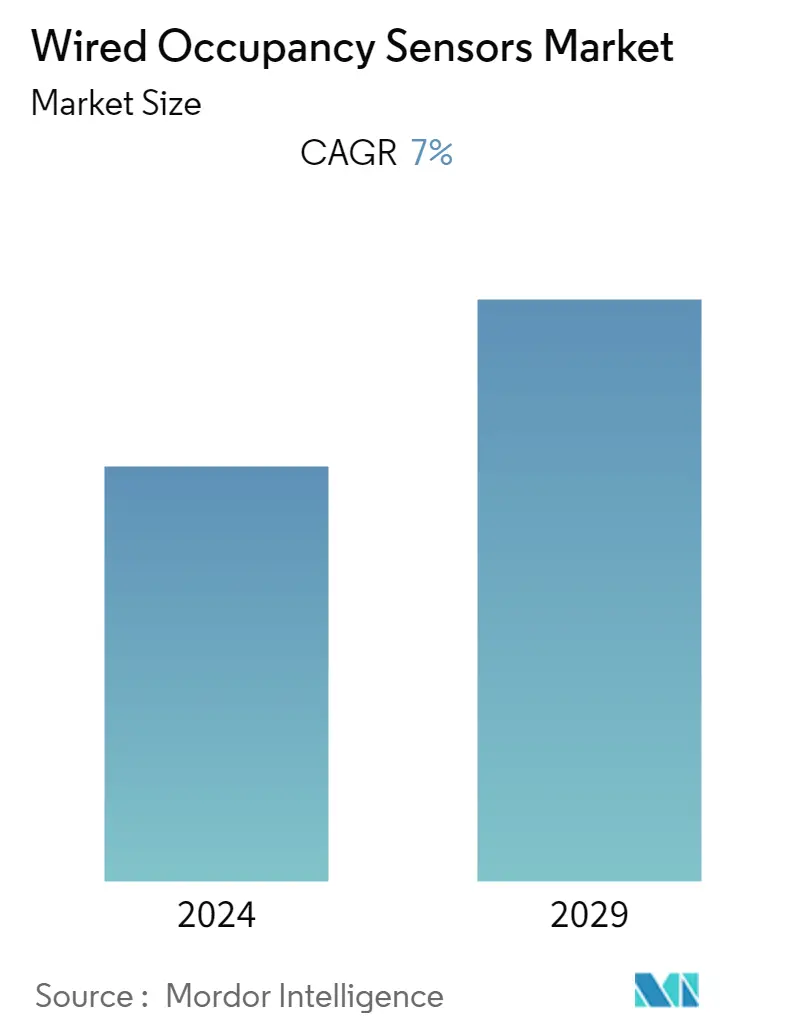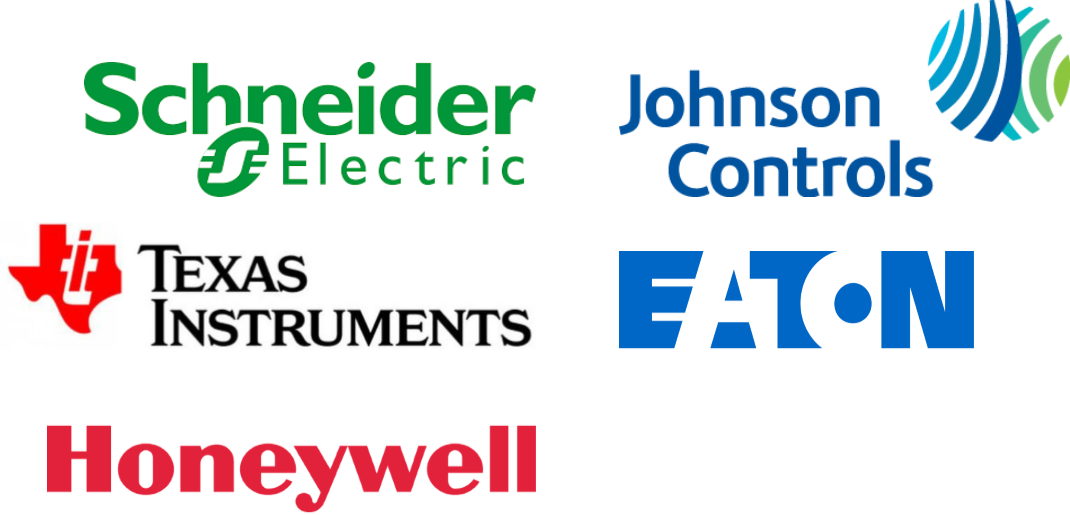Market Size of Wired Occupancy Sensors Industry

| Study Period | 2019 - 2029 |
| Base Year For Estimation | 2023 |
| CAGR | 7.00 % |
| Fastest Growing Market | Asia Pacific |
| Largest Market | North America |
| Market Concentration | Low |
Major Players
*Disclaimer: Major Players sorted in no particular order |
Wired Occupancy Sensors Market Analysis
The wired occupancy sensors market was valued at USD 2.15 billion in 2020 and is expected to reach USD 6.57 billion by 2026, at a CAGR of 7% over the forecast period 2021 - 2026. The increase in demand for the stable and high-accuracy sensor will drive the wired occupancy sensors market in the forecast period.
- Wired occupancy sensors have gone through several technological advancements since their development due to the continuous demand in the market for energy saving devices. This is achieved through the sensors, which shut down devices and other equipment on the basis of occupancy. These sensors help in reducing light pollution and they can be used for indoor and outdoor spaces.
- Energy saving has been crucial for growth in any economy, as a result of which the governments are also coming with several policies to save energy. Combining with other technologies and efficient lighting, it can help to save up to 30% of energy.
- For instance, the rising construction in the real estate sector has started installing occupancy sensors in most places, like washrooms, to save power, which is another major driver for the occupancy sensors market.
- However, the market is expected to face some hindrances, due to the complex installation process and lack of interoperability of wired occupancy sensors, which could be a challenge. Besides, increasing the adoption of wireless sensors is also expected to grab the share of wired occupancy sensors.
Wired Occupancy Sensors Industry Segmentation
Wired occupancy sensors are the kind of sensors that are installed at one particular place, and it gives constant feedback, which results in automatically turning the lights off and on when you enter or leave a particular room. They save energy and have better connectivity in terms of the wireless occupancy sensor.
| By Application | |
| Residential | |
| Corporate Offices | |
| Hotels | |
| Educational | |
| Industrial | |
| Medical and Healthcare | |
| Consumer Electronics | |
| Other Applications |
| Geography | |
| North America | |
| Europe | |
| Asia-Pacific | |
| Latin America | |
| Middle East & Africa |
Wired Occupancy Sensors Market Size Summary
The wired occupancy sensors market is experiencing significant growth, driven by the increasing demand for stable and high-accuracy sensors that contribute to energy savings. These sensors, which automatically shut down devices based on occupancy, are crucial in reducing light pollution and are applicable in both indoor and outdoor settings. The push for energy efficiency, supported by government policies, is a major factor propelling the market forward. The real estate sector's adoption of occupancy sensors in various locations, such as washrooms, further fuels market expansion. However, challenges such as complex installation processes and the rise of wireless sensors, which offer easier implementation, pose potential obstacles to market growth.
In North America, the market is bolstered by innovations like image processing and intelligent occupancy sensors, which have increased demand across various sectors, including residential, commercial, educational, healthcare, retail, and hospitality. The United States leads the market due to advancements in commercial and residential sectors and the growth of wireless network infrastructure, which supports home automation. Despite the fragmented nature of the market, with significant competition among major players like Honeywell International and Schneider Electric, the introduction of wireless technologies, such as Bluetooth-enabled sensors, presents a challenge to the wired occupancy sensors market.
Wired Occupancy Sensors Market Size - Table of Contents
-
1. MARKET DYNAMICS
-
1.1 Market Overview
-
1.2 Introduction to Market Drivers and Restraints
-
1.3 Market Drivers
-
1.3.1 Growing Demand for Stable and High-accuracy Sensors
-
1.3.2 Rapid Technological Developments in Motion Gaming
-
-
1.4 Market Restraints
-
1.4.1 Low Adaptability Due to Lack of Awareness
-
-
1.5 Industry Value Chain Analysis
-
1.6 Industry Attractiveness - Porter's Five Force Analysis
-
1.6.1 Threat of New Entrants
-
1.6.2 Bargaining Power of Buyers/Consumers
-
1.6.3 Bargaining Power of Suppliers
-
1.6.4 Threat of Substitute Products
-
1.6.5 Intensity of Competitive Rivalry
-
-
-
2. MARKET SEGMENTATION
-
2.1 By Application
-
2.1.1 Residential
-
2.1.2 Corporate Offices
-
2.1.3 Hotels
-
2.1.4 Educational
-
2.1.5 Industrial
-
2.1.6 Medical and Healthcare
-
2.1.7 Consumer Electronics
-
2.1.8 Other Applications
-
-
2.2 Geography
-
2.2.1 North America
-
2.2.2 Europe
-
2.2.3 Asia-Pacific
-
2.2.4 Latin America
-
2.2.5 Middle East & Africa
-
-
Wired Occupancy Sensors Market Size FAQs
What is the current Wired Occupancy Sensors Market size?
The Wired Occupancy Sensors Market is projected to register a CAGR of 7% during the forecast period (2024-2029)
Who are the key players in Wired Occupancy Sensors Market?
Jhonson Controls, Texas Instruments, Honeywell International, Schneider Electric and Eaton Corporation are the major companies operating in the Wired Occupancy Sensors Market.

